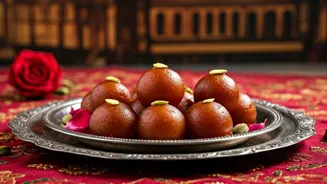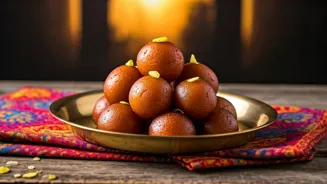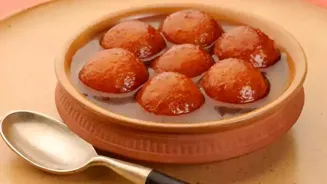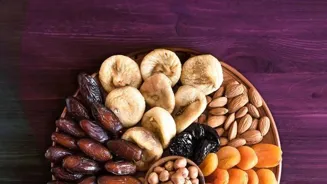Gulab jamun, the iconic dessert, holds a special place in hearts across the Indian subcontinent. This sweet treat has travelled through empires and centuries, becoming a symbol of celebration and shared joy.
Origins and Empires
Gulab jamun's origins trace back to Persia and even further. It travelled across empires, from the Mughal era to the present. The recipe was tweaked and adapted in various regions, finding its way into the hearts and homes across India, Pakistan, Bangladesh, and Nepal. This sweet, fried delight became a staple in many celebrations across the subcontinent.
Subcontinental Popularity
Gulab jamun's appeal lies in its simplicity and delightful taste. Its popularity has remained constant, transcending generations and cultural boundaries. In India, the dessert is synonymous with festive occasions, family gatherings, and religious celebrations. In the subcontinent, gulab jamun unites people across various backgrounds.
Variations Across Regions
The delightful dessert also has regional variations. Each region adds its unique touch, creating a symphony of flavors. Some feature rose-flavored syrup, while others incorporate cardamom, saffron, or even nuts. The variations add to the dessert's versatility, making it an essential part of culinary experiences across the regions.
A Symbol of Celebration
Gulab jamun is a celebratory symbol. It is often served at weddings, festivals, and other special occasions. From weddings to religious festivals, gulab jamun represents joy, togetherness, and the sweetness of life. Its presence brings an added festive cheer, making any occasion more memorable.















